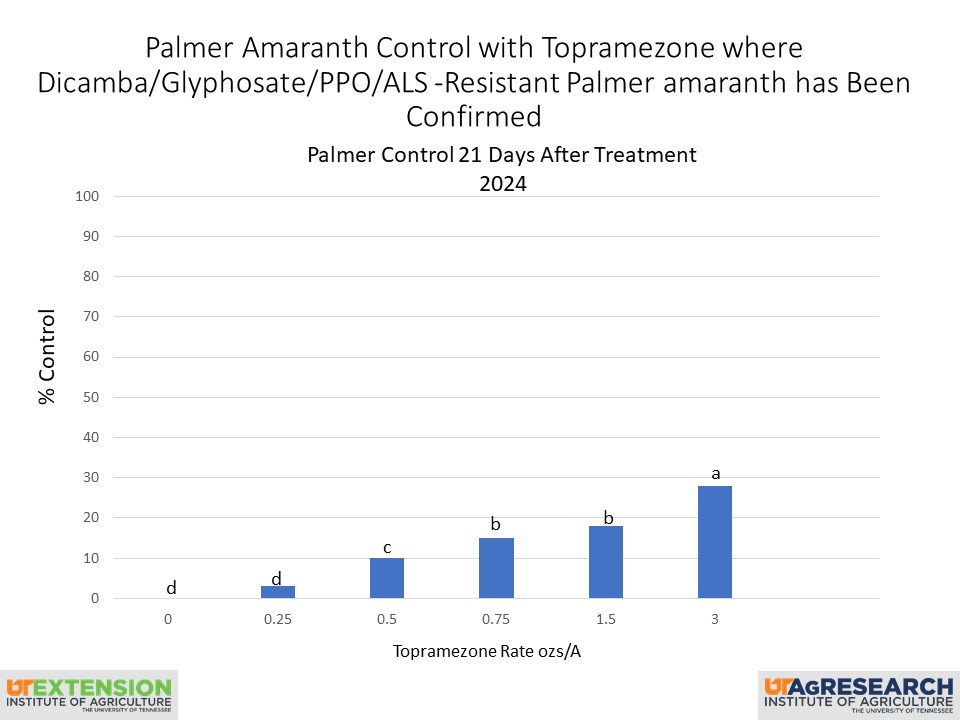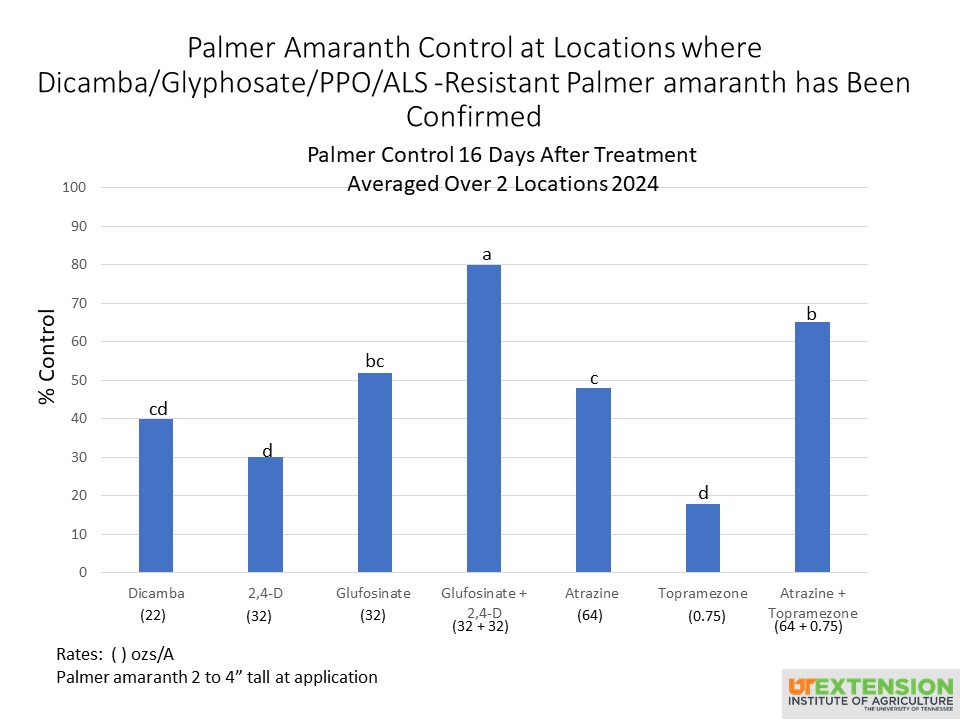Last fall there was a notable amount of Palmer amaranth in many corn fields in areas of the state where we had confirmed dicamba resistance. As a result, we have recently conducted some field screens on these pigweed populations to herbicides used in corn and soybean.
In the first study we saw a lack of Palmer control from topramezone with rates as high as 3 ozs/A (Figure 1). On the topramezone label it states that Palmer amaranth can be controlled with rates of 0.75 to 1.0 oz/A if applied to weeds that are less than 6” tall. Our applications were made to Palmer that was 4” tall. This is a very unwelcome result.
Another test examined dicamba, 2,4-D, glufosinate, 2,4-D + glufosinate, atrazine, topramezone and atrazine + topramezone. These herbicides were applied at their commonly used rates. The poor performance of dicamba and 2,4-D were expected from previous research in this area. The less than stellar control with glufosinate is not uncommon. The disappointing performance of atrazine and topramezone were new findings (Figure 2).
Figure 2
The tankmix of atrazine + tompramezone provided better control than either herbicide applied alone. Unfortunately, it was less than 70% control, which would be consistent with field observations last fall.
On the positive side, where Enlist crops are concerned as well as in corn, 2,4-D + glufosinate provided 80% Palmer amaranth control. Two applications of that tankmix applied about 10 days apart appeared to be the only labeled POST applications that can provide something close to acceptable control.
All these data would suggest the importance of applying effective PRE-applied herbicides and overlaying more residual herbicides POST.



